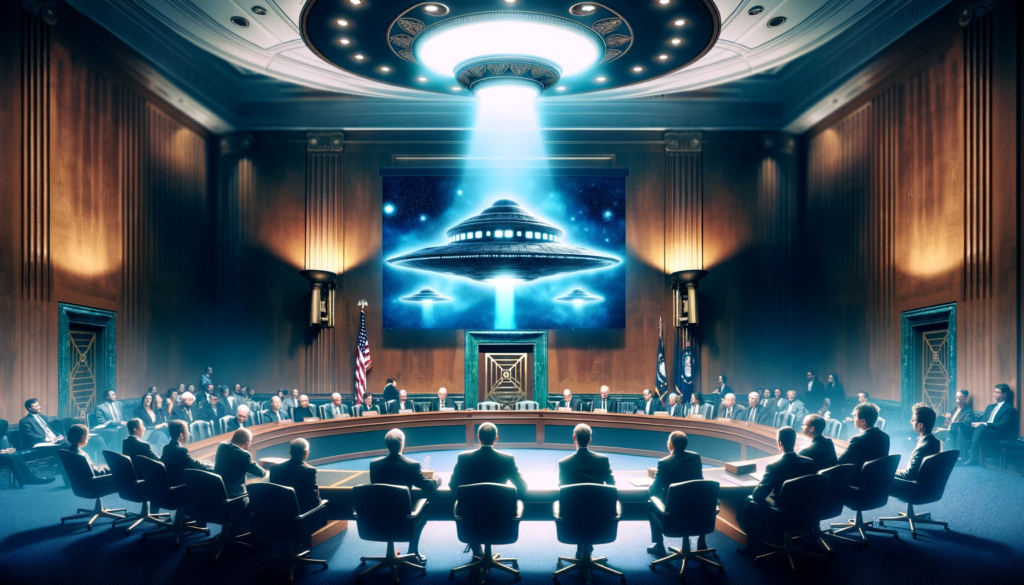Watch the US Senate Hearing on UFOs & UAPs: Insights into the All-Domain Anomaly Resolution Office – April 19th, 2023

On Wednesday, April 19th, 2023, the US Senate Hearing on UFOs & UAPs will take place at 10:30am. The hearing is titled “TO RECEIVE TESTIMONY ON THE MISSION, ACTIVITIES, OVERSIGHT, AND BUDGET OF THE ALL-DOMAIN ANOMALY RESOLUTION OFFICE” and will be held at SR-232A. The witness scheduled to testify is Dr. Sean M. Kirkpatrick, the Director of the All-domain Anomaly Resolution Office.
To watch the hearing, follow these steps:
- Access the live stream directly: The direct link to the live stream is https://www.armed-services.senate.gov/hearings/to-receive-testimony-on-the-mission-activities-oversight-and-budget-of-the-all-domain-anomaly-resolution-office. Click on this link to watch the hearing in real-time.
- Visit the U.S. Senate Committee on Armed Services website: For additional information on the hearing, including updates or changes, visit the Senate Committee on Armed Services website at https://www.armed-services.senate.gov/.
- Tune in to C-SPAN: C-SPAN often provides live coverage of congressional hearings. Visit the C-SPAN website at https://www.c-span.org/ and search for the UFO & UAP hearing. You can watch the live stream online or on their cable or satellite channels, if available.
- Follow news outlets and social media: Stay informed by following major news outlets, live blogs, or social media accounts of journalists covering the event for real-time updates and commentary.
- Watch the recorded hearing: If you are unable to watch the live stream, you can view a recorded version of the hearing on the Senate Committee on Armed Services website or on the C-SPAN website. These platforms typically archive videos of past hearings for future reference.
Be sure to check the provided websites for the most accurate and up-to-date information on the hearing.
The United States Senate Committee on Armed Services is a standing committee of the U.S. Senate responsible for overseeing and legislating matters related to the nation’s military, defense, and national security. Established in 1947, the committee plays a crucial role in shaping defense policy and overseeing the Department of Defense (DoD) and its various agencies.
The Senate Committee on Armed Services has several key responsibilities:
- Legislation and oversight: The committee is responsible for crafting, reviewing, and revising legislation related to the U.S. military, defense, and national security. This includes matters related to military personnel, weapons systems, strategic defense initiatives, and defense-related policies.
- Confirmation of military appointments: The committee plays a significant role in the confirmation process for high-ranking military officers and civilian personnel appointed by the President. These appointments include the Secretary of Defense, Secretaries of the military branches (Army, Navy, and Air Force), and top military commanders.
- Annual defense budget: The committee is responsible for reviewing and authorizing the annual defense budget proposed by the President. The National Defense Authorization Act (NDAA), which sets funding levels and policies for the DoD and the military branches, is a key piece of legislation that the committee reviews and amends before it is passed by Congress.
- Oversight of military operations: The committee conducts oversight of ongoing military operations, ensuring that they adhere to the policies and budgetary guidelines established by Congress.
- Investigations and hearings: The committee holds hearings and investigations on various defense-related matters, which may include examining military policies, the performance of the DoD and its agencies, and emerging threats to national security.
The Senate Committee on Armed Services is composed of senators from both the Democratic and Republican parties. The chair and ranking member of the committee are chosen based on the majority and minority parties in the Senate, respectively. The committee is further divided into subcommittees, each focusing on specific areas of defense policy and oversight.



